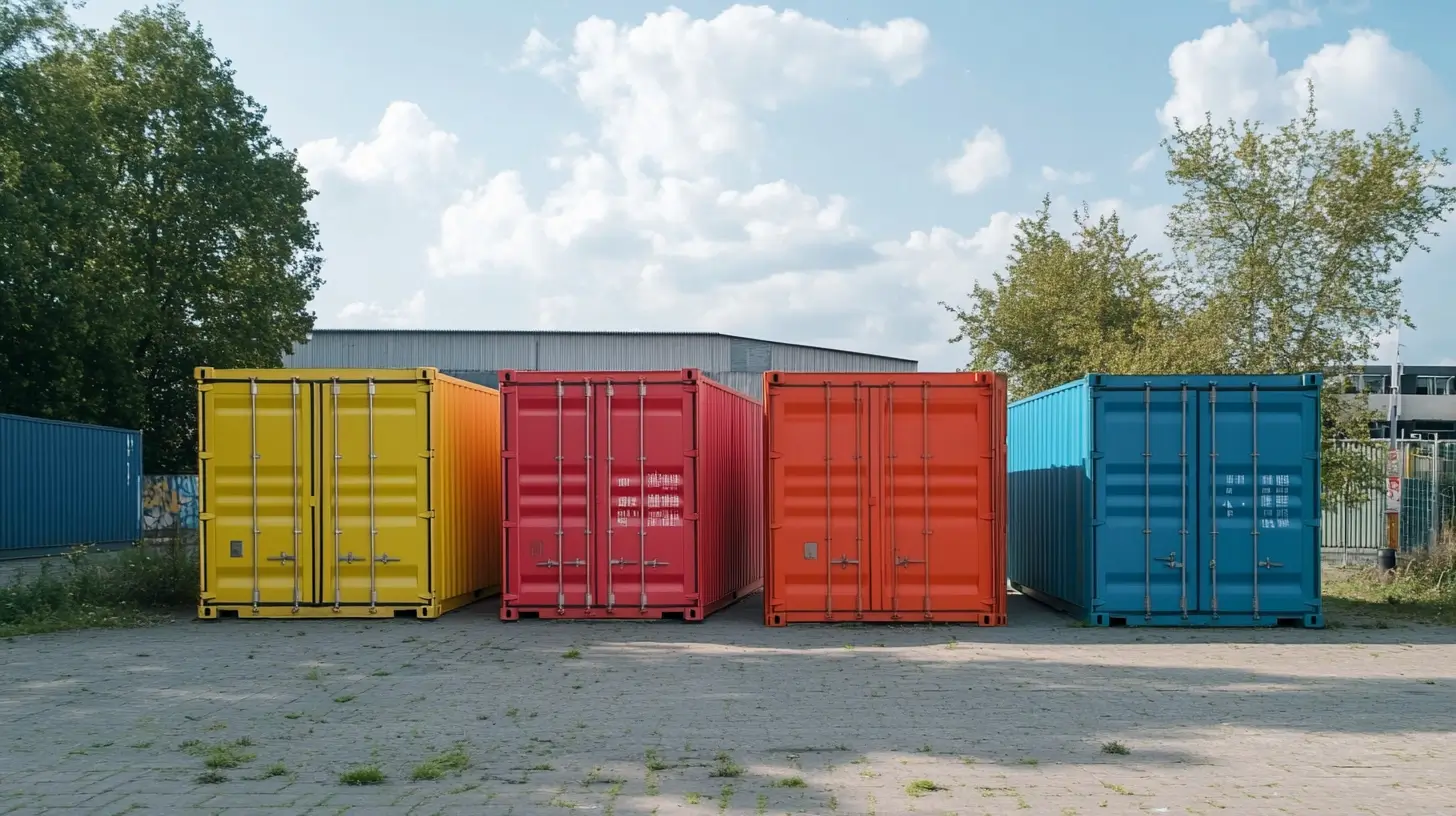Picture a container ship, far out to sea. It’s a broad, low vessel that rolls with the huge ocean waves. Hundreds of shipping containers are packed tightly together on the deck: yellow, green, white, blue, and red.
But did you know that each one of those brightly-coloured rectangles has a meaning? The colour of a shipping container can tell you what it’s used for, how old it is, or even who owns it. The confetti colours on board the ship are actually a complicated code.
The history of shipping container colours
Before the 1950s, no one had really heard of container ships. Most freight was moved over land, by rail or truck. The small amount of cargo that was traded by sea was shipped in non-standardized crates and bales. But freight companies were under pressure to move more goods, faster and more efficiently than ever before.
That’s when a man named Malcolm McLean came up with the idea of “containerization”: transporting cargo in standardised containers made of corten steel that could be identified by colour. A ship could hold many more containers than a truck or a train, and ships weren’t slowed down by traffic jams or railway faults.
His first challenge was to maximise the space on board ship. Previously, dock workers had to access cargo to read shipping labels, or even open different packages in order to check the contents. That meant they needed space around the cargo for access.
McLean developed a different system. If containers were colour-coded, then you wouldn’t need to open them or look at the doors: you could just glance at the colour to know what was inside. And when shipping containers were easier to recognise, there was also a lower risk of theft or loss.
Today, shipping containers still have door codes and identification markings, as required by the Industry Standard ISO 6346. But you can find out most of the information you need to know from each shipping container’s colour.
Why do shipping containers have different colours?
Shipping container colours carry a lot of information. Some colours indicate specific contents, such as hazardous substances. Other colours can tell you whether a container is new or old.
The biggest names in shipping have trademark brand colours so that you can recognise their shipping containers all over the world. If you buy your own shipping container—for storage, transport, or a building conversion—then you can choose your own custom colours.
Shipping container colours can also show information about customs compliance, temperature control, and weather resistance.
Container identification
“Container identification” usually means one of three things: the container’s type, contents, or age. Colour-coding containers makes it easy to store them in different categories, assign them for specific jobs, or spot them on board a container ship.
For example, containers from leasing companies are usually painted maroon or brown. The dark colour works best for containers which get rented out a lot, because it doesn’t show marks or dirt.
Colour-coded containers make it easy to see what a container is carrying. White containers often signify perishable or refrigerated cargo, while new equipment is usually delivered in grey containers.
Brand identification
Some shipping containers are painted with brand colours so that it’s clear who they belong to. The big freight brands, such as Maersk and Evergreen, have their own custom livery for shipping containers. Their containers can be identified quickly—and it helps with marketing, too.
Customs compliance
The shipping industry has strict rules for safety, including regulations about the contents of shipping containers. COSHH stores, or chemical store containers, are often painted in eye-catching colours, like bright yellow, orange, or red, to increase visibility and signal caution.
These high-visibility colours help quickly identify the container’s purpose, alerting workers and emergency responders to the potential presence of hazardous materials and ensuring the area is treated with appropriate care.
Corrosion protection
Along with identifying them, paint can also help to protect shipping containers. Container paint is marine-grade, which means it helps against rust prevention and corrosion.
Almost all containers have to survive mechanical wear as they’re moved around. Containers on board ships have to survive salt water and harsh weather as well. Painting a shipping container can help it last much longer.
In need of high-quality shipping container paint?
Check out our wide range of colours and options today!
Buy container paintTemperature control
Some specific paint colours can have a protective effect on shipping containers. For example, refrigerated containers are usually white because the white paint helps to reflect heat away from the cargo.
What do shipping container colours mean?
As we’ve already mentioned, shipping container colours carry a lot of different meanings. They can indicate the contents, owner, age, or even destination of a container.
Here’s a quick guide to the most common shipping container colours that you’ll see.
White containers
White is a very popular colour for shipping containers. It reflects heat and sunlight, so it’s the colour of choice for heat-sensitive, perishable, or refrigerated goods. However, white containers need frequent repainting because they show marks easily.
Blue containers
Blue containers are also popular because they’re highly visible. It’s easy to pick blue containers out on a crowded ship or in a busy dockyard. However, not all blues are created equal. Many companies use a colour chart to select specific shades of blue—each one indicating a different brand, cargo, or destination.
Green containers
Green shipping containers are most often painted to represent a brand. Like blue, they’re also highly visible and easy to pick out. Some containers are painted green to signal that they’ve been repurposed from another use, such as storage on land.
Red containers
Red is a popular choice for general cargo in container ships. It’s most often used for “dry cargo”, or storage and transport on land. Although red containers are easy to spot, they can absorb heat, so they’re not usually chosen for perishable goods.
Yellow containers
When it comes to shipping container paint, yellow usually signals a warning. Yellow containers might indicate they hold a specific cargo, hazardous materials, or a need for special handling. It’s designed to stand out and get attention.
Brown containers
Just like red, brown is a popular choice for containers that carry regular cargo. It doesn’t show marks or dirt, and it absorbs less heat than other, darker colours.
Looking for a container in a specific colour?
We offer professional painting services for shipping containers in any RAL colour of your choice. Whether you need a bold, branded look or something that blends seamlessly into your surroundings, we can customise your container to match.
Check out all our shipping container colour options now.
View container coloursWhat is the most popular colour of shipping container?
It’s hard to say which shipping container colour is most popular, because it can vary a lot across different shipping routes, brands, and types of cargo. However, several of the biggest freight brands use blue or green containers for regular cargo. It’s likely that blue and green are the most common shipping container colours overall.
What colours are best for shipping containers?
The best colour for your shipping container depends on several factors:
- How you plan to use it
- Whether it needs to be visible
- How often you want to maintain it
For example, if you want to rent a workhorse container for storage, then brown or maroon is a good choice. These colours are hard-wearing and require less repainting. They’re not highly visible, but they don’t need to be.
Benefits of painting your shipping container to a custom colour
If you buy your own shipping container, you can repaint it to match your personal taste. Repainting can also help the container last longer or stand out more.
For example, if you’re using a container conversion for your business, you might repaint it in your brand colours. You could paint a container to blend into a rural setting, or stand out on a crowded street. Whichever colour you choose, marine-grade container paint will add an extra layer of protection against rust and corrosion.
What is the RAL colour chart?
The RAL colour chart is a list of colours that are used in the shipping industry. It’s a European colour matching system that helps companies use consistent colours in paint, coating, and plastics. On shipping containers, the RAL colour chart is used to match varnishes, powder coating, and industrial finishes.
The original, German-coined RAL colour chart had just 40 colours. But today you can choose from over 2000 colour options, each with a unique four-digit code.

*Please be aware that the colours displayed in the chart above are for reference purposes only. Because screens and printers can display colours differently, the final paint colour may not exactly match what you see here.
How to choose a RAL paint colour for your shipping container
Many container paint providers use the “RAL Classic” chart. It’s a set of 216 colours, including the original 40 but with some more variety. If you choose something from the full list of 2000 RAL colours, it may be harder to track down exactly the paint you want.
Popular colours are usually easier and cheaper to find. You’ll also need to think about the type of container you’re painting, the environment it’s in, how you plan to use it, and your preferred aesthetic.
Popular RAL paint colours for shipping containers
Shipping containers can be painted in any of the 2000 colours in the RAL colour chart. However, in practice, some colours are much more common than others.
H4 – Blue
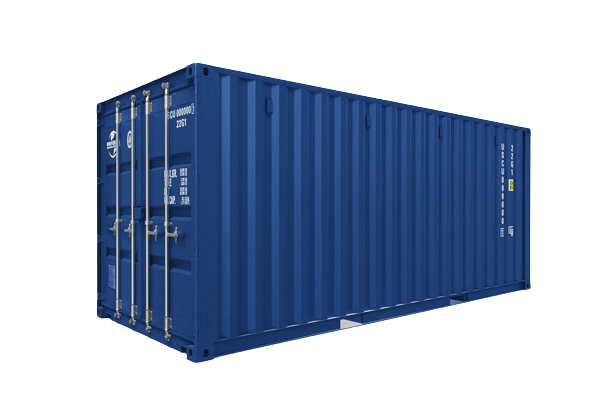
- RAL 5010 – a soft light blue often used in storage facilities.
- RAL 5013 – a rich, cobalt blue popular for hire fleet containers and commercial sites.
H4 – Green
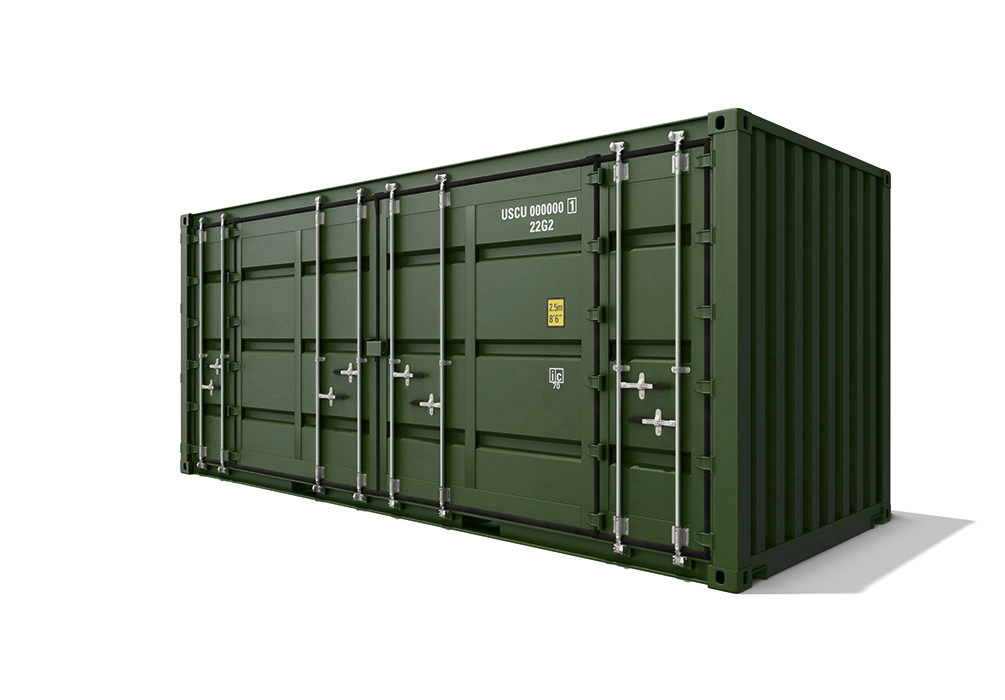
- RAL 6005 – a moss colour typically used in garden settings.
- RAL 6007 – a vibrant bottle green commonly used in customisation.
- RAL 6028 – a pine green popular in settings where the container needs to blend in.
H4 – Grey
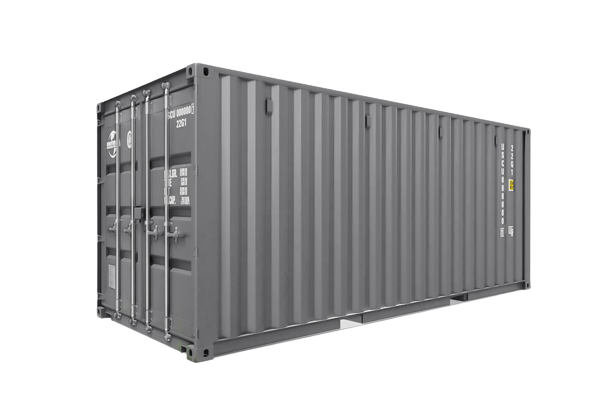
- RAL 7004 – a versatile grey good for light reflection.
- RAL 7012 – a silver grey used for aesthetic purposes.
- RAL 7016 – an anthracite grey popular for personal use.
- RAL 7035 – a light grey often used for interior finishes.
H4 – White and beige
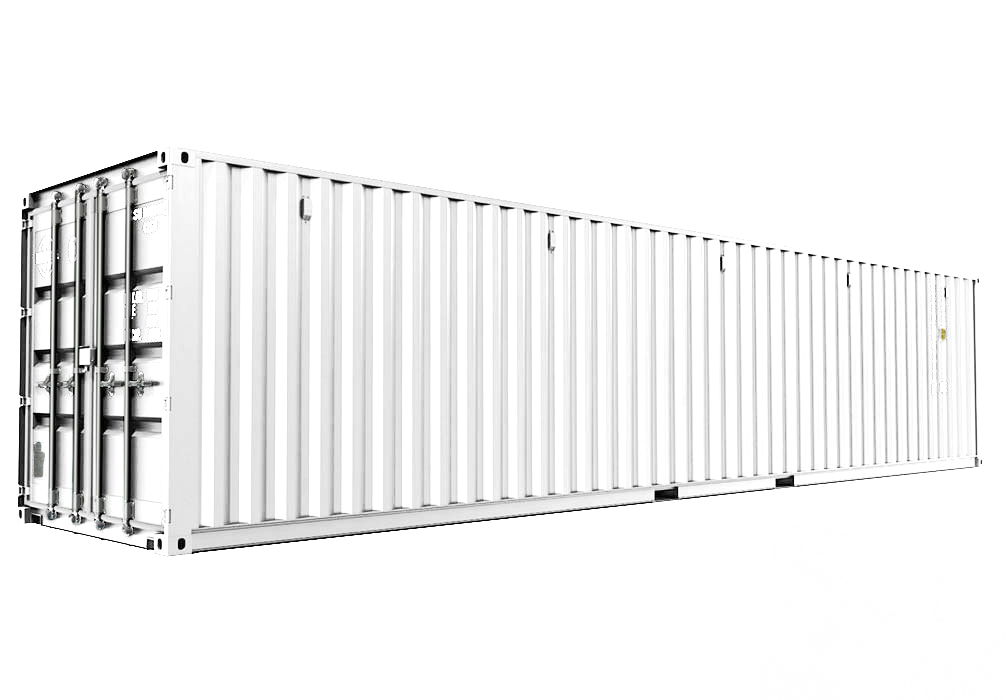
- RAL 9003 – a true white.
- RAL 1015 – a standard beige colour.
H4 – Brown
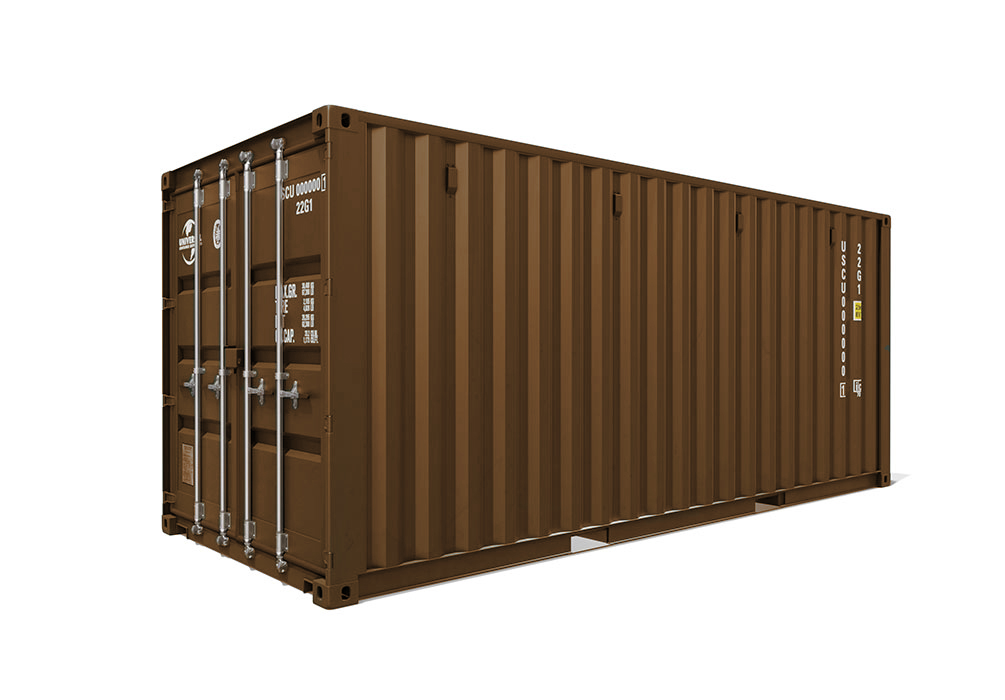
- RAL 1001 – a red brown commonly used for agricultural or military use.
- RAL 8008 – an olive brown shade popular on farms or in the military..
H4 – Black
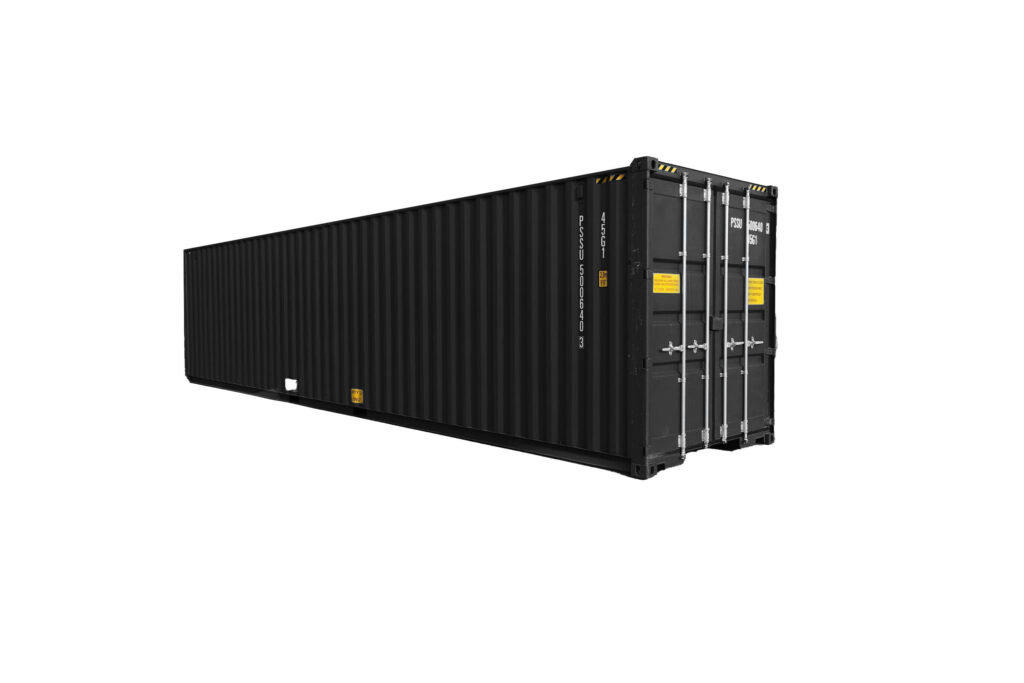
- RAL 9005 – a true black offering a bold look.
The bottom line
There’s much more to shipping container colours than meets the eye. The colour of a shipping container can tell you how old the container is, who it belongs to, and even hint at what’s inside.
When you’re choosing a container paint colour, you’ll need to think about the cargo, environment, and your personal taste. The right marine-grade paint will help your container to last longer—and it could even help to protect what’s inside.
Looking for a completely custom solution?
We have a wide range of base containers that can be customised to your needs, however we
realise
that
sometimes you need something completely ‘Outside the box’.
Contact us and one of our experts will be in touch to help design the container of your
dreams


